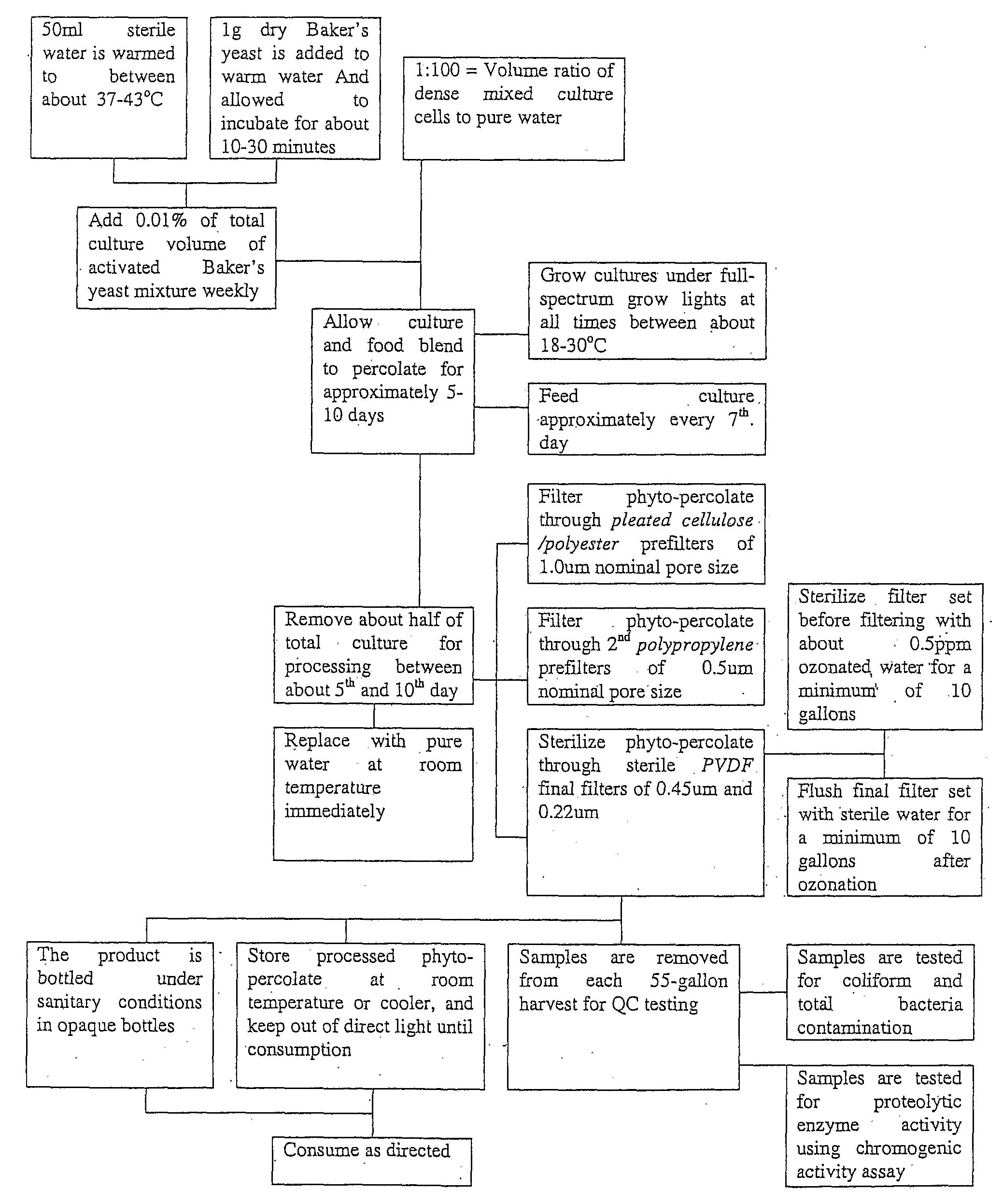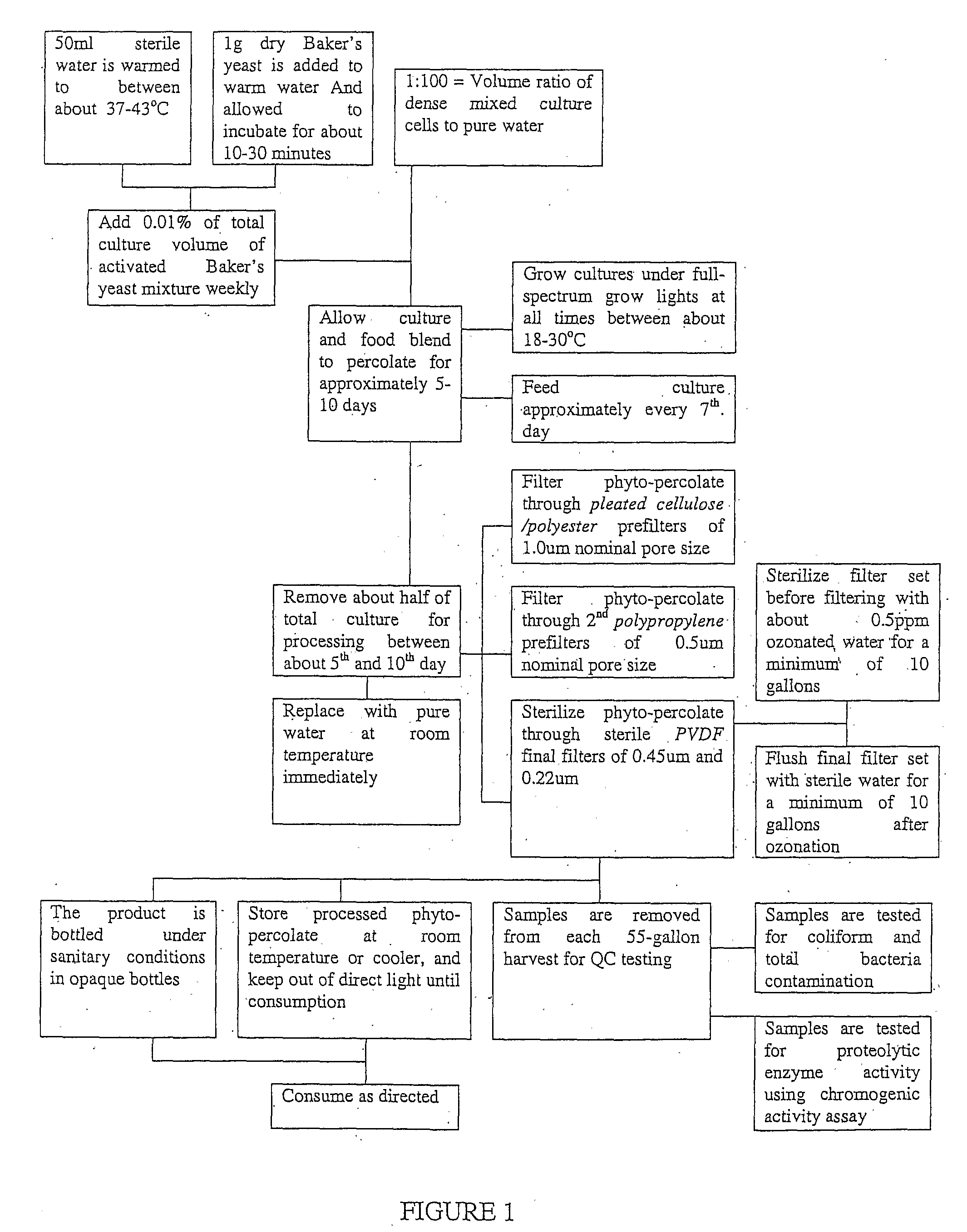Method of Preparation and Use of Fibrinolytic Enzymes in the Treatment of Disease
a fibrinolytic enzyme and fibrinolytic enzyme technology, which is applied in the field of preparation of phytopercolates, can solve the problems of affecting the detoxification, elimination process, and affecting the treatment effect of fibrinolytic enzymes,
- Summary
- Abstract
- Description
- Claims
- Application Information
AI Technical Summary
Benefits of technology
Problems solved by technology
Method used
Image
Examples
example 1
TREATMENT OF HIV
[0091] A twenty-three year old male presents with an elevated T-cell count and a determinable viral load of HIV virus. The subject is administered one ounce per day of phyto-percolate for seven days. The subject is tested thirty days thereafter and is found to have a substantially reduced or sub-determinable viral load.
example 2
TREATMENT OF ACNE
[0092] An 18 year old female presents with mild to moderate cystic acne. The subject is administered one ounce twice a day of phyto-percolate for 30 days. Acne is substantially reduced after three weeks and such reduction continues over the course of treatment.
example 3
TREATMENT DURING CHEMOTHERAPY
[0093] A 54 year old subject is undergoing doxorubicin therapy for treatment of cancer. On days when the chemotherapeutic agent is administered, the subject ingests 1 oz of phyto-percolate per hour for 8 hours. The side effects of chemotherapy are thereby significantly relieved.
[0094] Although, the use of phyto-percolate in the above examples are upon human subjects, it should be understood by those skilled in the art that the phyto-percolate may be used in animals to treat similar disease states (e.g arthritis, cancer, cardio-vascular disease, etc.). Likewise it should be understood that the phyto-percolate can be used to enhance the well being and performance of animals.
PUM
| Property | Measurement | Unit |
|---|---|---|
| volume | aaaaa | aaaaa |
| temperature | aaaaa | aaaaa |
| pore size | aaaaa | aaaaa |
Abstract
Description
Claims
Application Information
 Login to View More
Login to View More - R&D
- Intellectual Property
- Life Sciences
- Materials
- Tech Scout
- Unparalleled Data Quality
- Higher Quality Content
- 60% Fewer Hallucinations
Browse by: Latest US Patents, China's latest patents, Technical Efficacy Thesaurus, Application Domain, Technology Topic, Popular Technical Reports.
© 2025 PatSnap. All rights reserved.Legal|Privacy policy|Modern Slavery Act Transparency Statement|Sitemap|About US| Contact US: help@patsnap.com


